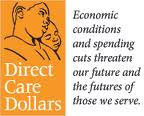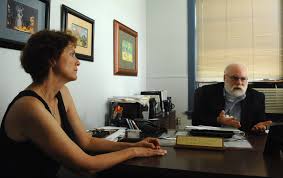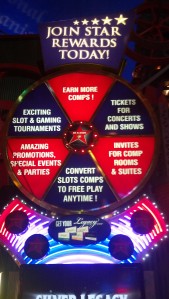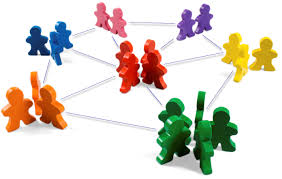You may remember that around the turn of the century there was a rash of failures when it came to the idea of “board governance“. These failures emanated from the for-profit sector — WorldComm, Enron, and Tyco — but it got people asking an important question: “Does a board governance model still work in the 21st Century?” This question logically lead to the next question, which was “What does it take to build a more effective board of directors?”
I stumbled upon an old article 2002 article from Jeffrey Sonnenfeld in the Harvard Business Review titled “What Makes Great Boards Great“. OMG! If you haven’t read this article, it is a MUST READ! While I’m going to hit a few of the highlights in today’s blog post, please trust me when I say this is worth the click.

The usual suspects
How many times have you sat around a board development/governance committee table and talked about how to make your board work better?
I’ve been there more times than I care to admit, and it is almost as if Sonnenfeld was a fly on the wall in all of those meetings. In the first few pages of his article, he rattles off the list of things we’ve all talked about when discussing this issue.
- Improving board attendance
- Improving the committee system
- Diversifying our board (esp. recruiting younger board members)
- Focusing on board size and trying to right-size our board
We focus so much on structural best practices, and this never seems to get us any closer to a more functional board.
 The human element
The human element
There is a pop-up quote in Sonnenfeld’s article that captures his thoughts on this subject perfectly:
“What distinguishes exemplary boards is that they are robust, effective social systems.”
Here are just a few suggestions he offers to those of you trying to build great boards:
- Establish and use annual evaluation tools for both the organization and individual
- Establish and use accountability tools
- Encourage board members to constantly re-examine their roles
- Foster a culture of open dissent
- Create an organizational culture built on trust and candor
Each of these bullet points could be a blog post by itself. Luckily, Sonnenfeld does a nice job of elaborating on all of this in his article, which is why you really need to go read his article.
Rather than drill deeper, I’m going to throw it open to you and the other readers this morning. What are you doing to build a GREAT board? What do your evaluation and accountability tools look like? What are you doing to change organizational culture and foster respect, openness, trust, etc? What is working and what isn’t working at your agency? Please share your thoughts and experiences using the comment box below. We can all learn from each other.
Additionally, I strongly urge you to click-through and read the Sonnenfeld article in the Harvard Business Review. Sure, some of the for-profit stuff won’t apply to your non-profit agency, but much of it will. You won’t be disappointed.
Here’s to your health!
Erik Anderson
Founder & President, The Healthy Non-Profit LLC
www.thehealthynonprofit.com
erik@thehealthynonprofit.com
http://twitter.com/#!/eanderson847
http://www.facebook.com/eanderson847
http://www.linkedin.com/in/erikanderson847

 I love Monday mornings! I wake up, feed the dog and cat, grab a cup of coffee, sit down at my computer and open my email, and most Monday mornings involves watching “
I love Monday mornings! I wake up, feed the dog and cat, grab a cup of coffee, sit down at my computer and open my email, and most Monday mornings involves watching “ Welcome to O.D. Fridays at DonorDreams blog. For the last few years, we’ve looked at posts from John Greco’s blog called “
Welcome to O.D. Fridays at DonorDreams blog. For the last few years, we’ve looked at posts from John Greco’s blog called “ Here are just a few examples of what those situations looked like:
Here are just a few examples of what those situations looked like: The definition of the word “grace” according to a Google search is: “simple elegance or refinement of movement“.
The definition of the word “grace” according to a Google search is: “simple elegance or refinement of movement“. Just the other day a friend started talking with me about non-profit directors and officers (D&O) insurance. During the course of that conversation, all sorts of things were discussed and at one point I made a mental note to do a little research. Having just finished my homework, I honestly can say that I completely understand why people don’t like insurance companies — this stuff is complicated.
Just the other day a friend started talking with me about non-profit directors and officers (D&O) insurance. During the course of that conversation, all sorts of things were discussed and at one point I made a mental note to do a little research. Having just finished my homework, I honestly can say that I completely understand why people don’t like insurance companies — this stuff is complicated. The list is long, but the following things are typically excluded from the average D&O insurance policy:
The list is long, but the following things are typically excluded from the average D&O insurance policy: I shared some of my research with a group of amazing non-profit consultants tonight. The consensus of this group of very smart people was that board volunteers never ask the hard questions about their D&O insurance policies until it is too late.
I shared some of my research with a group of amazing non-profit consultants tonight. The consensus of this group of very smart people was that board volunteers never ask the hard questions about their D&O insurance policies until it is too late. Last week I was in Reno, Nevada at Boys & Girls Clubs of America’s (BGCA) Pacific Leadership Conference. This week I am in Mashantucket, Connecticut at BGCA’s Northeast Leadership Conference. The common denominator is that I am helping organize and facilitate a training track for executive directors and school superintendents. One of the sessions in the training track addresses the issue of data sharing, and I thought it would be a good topic to discuss today with DonorDreams readers.
Last week I was in Reno, Nevada at Boys & Girls Clubs of America’s (BGCA) Pacific Leadership Conference. This week I am in Mashantucket, Connecticut at BGCA’s Northeast Leadership Conference. The common denominator is that I am helping organize and facilitate a training track for executive directors and school superintendents. One of the sessions in the training track addresses the issue of data sharing, and I thought it would be a good topic to discuss today with DonorDreams readers. The following are just a few key strategies identified by participants that will help any non-profit organization sustain data sharing agreements with its partners:
The following are just a few key strategies identified by participants that will help any non-profit organization sustain data sharing agreements with its partners: When I was an internal consultant working for Boys & Girls Clubs of America (BGCA), my team was charged with helping local affiliates build their organizational capacity around resource development. In the beginning, there were two sides of our team — annual campaign support and planned giving support. As time passed, our team focused on creating a third vehicle of service — major gifts.
When I was an internal consultant working for Boys & Girls Clubs of America (BGCA), my team was charged with helping local affiliates build their organizational capacity around resource development. In the beginning, there were two sides of our team — annual campaign support and planned giving support. As time passed, our team focused on creating a third vehicle of service — major gifts. Of course, there will likely be a HUGE difference between me making a recipe and the Barefoot Contessa (aka Ina Garten) making the same dish. I suspect there will be huge differences in results between small and large non-profit organizations. In my opinion, here are just a few things that will make a difference:
Of course, there will likely be a HUGE difference between me making a recipe and the Barefoot Contessa (aka Ina Garten) making the same dish. I suspect there will be huge differences in results between small and large non-profit organizations. In my opinion, here are just a few things that will make a difference: I don’t know about you, but radio plays an important role in my life. I used to live in my car traveling from client-to-client throughout the Midwest when I was an internal consultant. After opening my own consulting practice, I now travel much shorter distances, but I still spend a decent amount of time in my car. So, the radio is where I turn for a decent amount of news and entertainment, especially when I’m on the road. However, when I’m at home I don’t listen as much because I don’t get very good reception in the house, which is why I was so elated the other day when I discovered the
I don’t know about you, but radio plays an important role in my life. I used to live in my car traveling from client-to-client throughout the Midwest when I was an internal consultant. After opening my own consulting practice, I now travel much shorter distances, but I still spend a decent amount of time in my car. So, the radio is where I turn for a decent amount of news and entertainment, especially when I’m on the road. However, when I’m at home I don’t listen as much because I don’t get very good reception in the house, which is why I was so elated the other day when I discovered the  Welcome to O.D. Fridays at DonorDreams blog. Every Friday for the foreseeable future we will be looking at posts from John Greco’s blog called “
Welcome to O.D. Fridays at DonorDreams blog. Every Friday for the foreseeable future we will be looking at posts from John Greco’s blog called “ As the years passed, Larkin Center added more services including a school for children struggling with behavior disorders and counseling services for adults.
As the years passed, Larkin Center added more services including a school for children struggling with behavior disorders and counseling services for adults. There will be lots of news coverage about the “failure“. Many people will weigh-in with what they think went wrong and what could’ve and should’ve been done differently. There might even be a victory lap taken by a few Elgin city council members who openly fought with Larkin Center because they didn’t think “those kids” belonged in our community.
There will be lots of news coverage about the “failure“. Many people will weigh-in with what they think went wrong and what could’ve and should’ve been done differently. There might even be a victory lap taken by a few Elgin city council members who openly fought with Larkin Center because they didn’t think “those kids” belonged in our community. When I think about the donors who invested in efforts to save this organization in the final months and years of its life, I want to honor those efforts.
When I think about the donors who invested in efforts to save this organization in the final months and years of its life, I want to honor those efforts. As I said in an earlier post this week, I am currently in Reno, Nevada at Boys & Girls Clubs of America’s Pacific Leadership Conference. The conference is being held at Silver Legacy Resort & Casino. Of course, in order to get from the hotel to the conference sessions, you need to walk through the casino where you are bombarded by all sorts of “shiny objects”.
As I said in an earlier post this week, I am currently in Reno, Nevada at Boys & Girls Clubs of America’s Pacific Leadership Conference. The conference is being held at Silver Legacy Resort & Casino. Of course, in order to get from the hotel to the conference sessions, you need to walk through the casino where you are bombarded by all sorts of “shiny objects”. In an effort to make the time pass more quickly, I started making a list. Admittedly, I started thinking way outside of the box, but here is some of what I came up with:
In an effort to make the time pass more quickly, I started making a list. Admittedly, I started thinking way outside of the box, but here is some of what I came up with:





 Greetings from Reno, Nevada! I am currently at Boys & Girls Clubs of America’s (BGCA) Pacific Leadership Conference. Today, I helped organize and facilitate a day long training track for executive directors and their local school superintendents focused on the idea of collaboration.
Greetings from Reno, Nevada! I am currently at Boys & Girls Clubs of America’s (BGCA) Pacific Leadership Conference. Today, I helped organize and facilitate a day long training track for executive directors and their local school superintendents focused on the idea of collaboration.